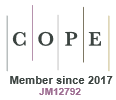Estimating the risk associated with drying-off strategies for irrigated sugarcane before harvest
M. J. Robertson, R. C. Muchow, R. A. Donaldson, N. G. Inman-Bamber and A. W. Wood
Australian Journal of Agricultural Research
50(1) 65 - 78
Published: 1999
Abstract
The development of recommendations for drying-off management in sugarcane is difficult due to climatic variability and lack of knowledge of the sensitivity of changes in sucrose content and cane yield to severity of water deficit. Relative cane biomass targets were developed for drying-off irrigated sugarcane before harvest based on derived relationships between cane yield, cane dry weight, and sucrose concentration, using pooled data from previous field studies. These targets were then linked to a crop–soil model and long-term climate data to determine the economically optimum duration of drying-off, and its variability from season to season for 2 locations in Australia and one location in South Africa, for a range of harvest dates and soil types. The crop–soil model was validated on yields measured in 37 drying-off treatments conducted in South Africa and Australia. The simulation results show that the required drying-off duration can be highly variable, although the level of variability is not necessarily correlated with rainfall per se. There were interactions between soil type and harvest date, but not at every location.The systems approach outlined here can be useful in developing recommendations for drying-off where experience is limited, such as in expanding areas of sugar industries, for districts in which the practice of irrigation is increasing, or for harvest dates outside the current harvesting season.
Keywords: rainfall, water deficit, sucrose, yield, CCS.
https://doi.org/10.1071/A98051
© CSIRO 1999


